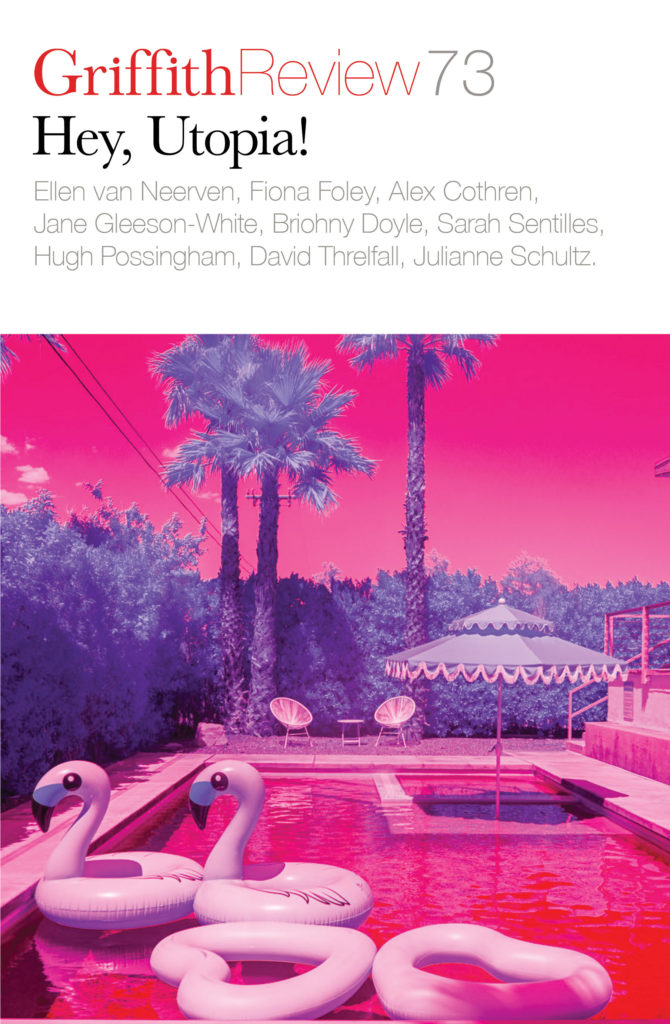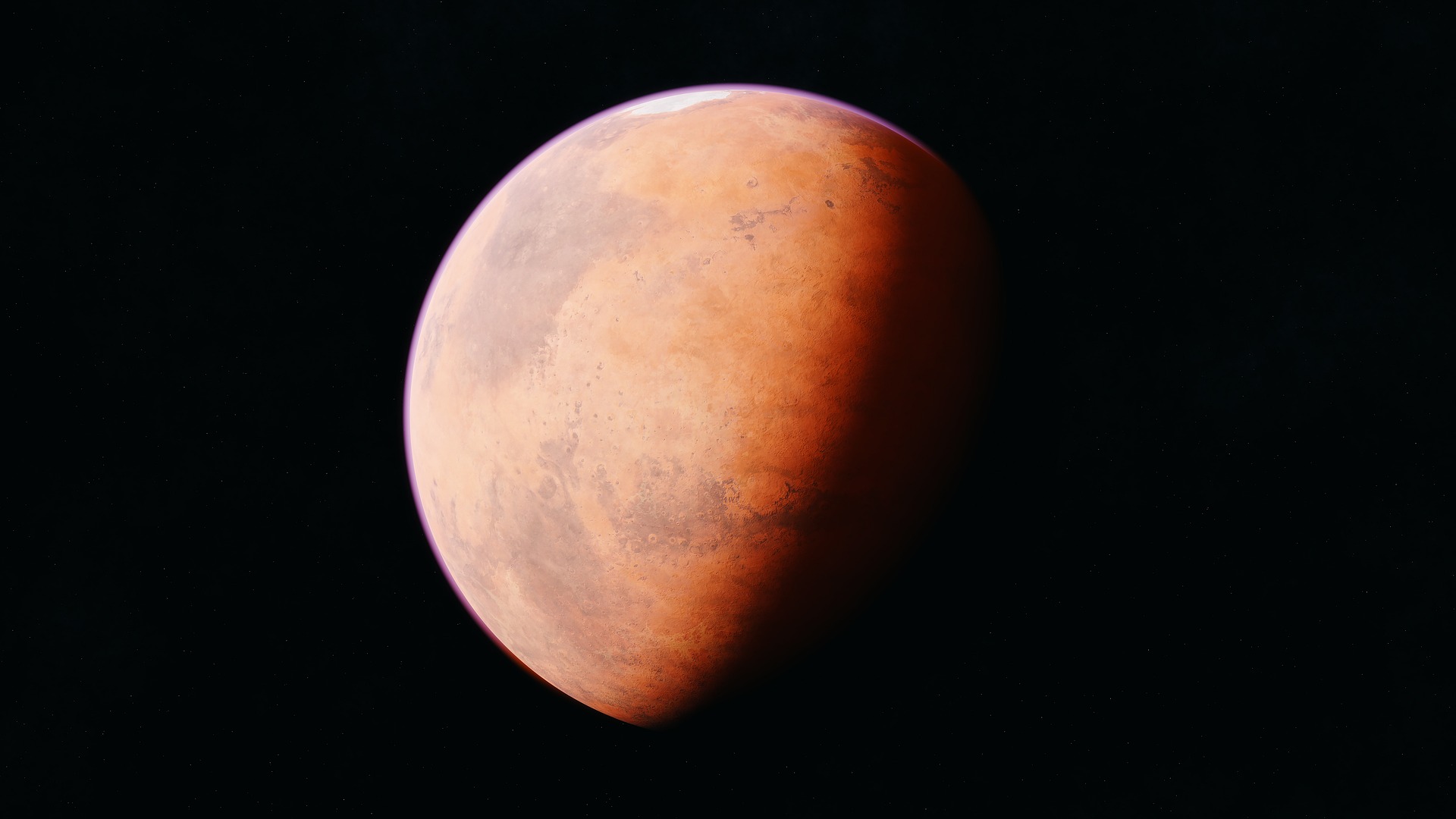Featured in

- Published 20210803
- ISBN: 978-1-922212-62-7
- Extent: 264pp
- Paperback (234 x 153mm), eBook
Click here to listen to Editor Ashley Hay read her introduction ‘Reframing the thought experiment’.
IT WAS ONLY recently that I learnt about aphantasia, a condition in which people cannot conjure up or visualise mental imagery. A friend explained that if she asked her children to imagine seeing an apple, they could describe exactly what they saw in their mind’s eye. She, on the other hand, could think about an apple, but could not bring an image – of an apple purchased, an apple eaten, an apple in a picture – to mind.
As someone who’s spent some time conjuring imaginary characters, places and events into being through fiction, not to mention trying to evoke passable versions of the real world in essays and journalism, this felt like a fascinating and fearsome proposition. In the current world, with its aspects of physical distance, separation and pre-industrial mobility, it presents as even more precarious.
I know it grabbed me as a concept because I find myself testing my internal visual acuity, springing small challenges on my own mind’s eye: can I picture this person? Can I picture this object? Can I recall and see this place, this painting, this creature? Tonight, I throw myself the challenge of Thomas More, author, lawyer, philosopher, executed in 1535 and canonised 400 years later.
And there he is, conjured up as Hans Holbein painted him in 1527: strong features, expensive trimmings, velvets and furs; a darkly direct gaze. I can conjure, too, the version created by Hilary Mantel to navigate hundreds of rich pages with Thomas Cromwell in Wolf Hall.
What’s this thought experiment about? It’s about imagination. It’s about the series of steps that links Thomas More to me here now – through history, through creativity, through the steps that his creations in his world have made and still make possible in mine, centuries later. Because tonight, I’m conjuring – through his image – the multitudinous atlas he made possible when he created a name for one perfect, unattainable nowhere.
Utopia.
The starting point of Sir Thomas More’s imagination matters here, as the progenitor of subsequent utopian creations. And Hilary Mantel’s imagination matters too because she returns More to the imaginative vocabulary, the imaginative populace of all her readers’ minds.
We can orient ourselves differently in this world – where we are and where we might be – by building out from each other’s imaginations. We need the place Thomas More imagined. We need the Thomas More Hilary Mantel imagined. We need the many disparate imaginations of each other, and then each of us can create new dot-points of no-places – or good-places – afterwards.
Remaking, transforming, reshaping and interpreting our own worlds, one train of thought at a time.
WE’RE WELL INTO the second year of this pandemic – at the time of writing this virus had accounted for at least 3.7 million lives around the planet, an almost unimaginable number of personal, familial, communal worlds remade. Early hopes that this moment of rupture might generate transformation or redress – an insistence on other systems, other shapes and futures – may have become tangled in the messy mechanics and logistics of vaccines, lockdowns, quarantines, separations, new precarities of daily life, but that makes them no less important. And there’s been no shortage of plans, proposals and suggestions for how to make the world anew. Part of Hey, Utopia!’s mission is to explore different ways of conceiving of these as much as realising them, through the portals of the past, the present and the future; through new lenses, new frameworks, new fundamental questions.
The four editions of Griffith Review in 2021 set out to investigate different facets of sustainability: through resources, through mental wealth and wellbeing, through these utopias and – in November – through ideas of escape. Perhaps a current definition of sustainability has more licence, or greater necessity, to reflect not a sense of something ongoing – sustainability as maintenance – but the greater urgency for adaptation, change, evolution. Revolution. Of understanding other ways the world can be.
If imagination exists to understand the present and envision the future, as a special edition of Elementa: Science of the Anthropocene noted recently, ‘it is clear that who imagines our future, and what kinds of processes and inputs are used matters greatly to whether a transformation moves us toward addressing sustainability and justice.’
THESE STORIES WILL introduce a variety of proposed utopias – past, present and future – and some means for working towards others, alongside some of their inevitable dystopian cousins. This part of the world has had utopian labels applied to it in different ways at different times, from northern-hemisphere daydreams of a Great Southern Land to Samuel Butler’s fictional country Erewhon, brought forth from the vantage point of a sheep farm in New Zealand in the mid-nineteenth century. Australia itself has been presented as utopian – Tasmania, in particular. The realities hidden beneath these labels make clear the urgent necessity of shaking free from their utopian presumptions. In this, several writers here look towards the generous invitation of the Uluru Statement From the Heart as the most critical way for Australia to work towards a new relationship with itself. And this underscores the importance of reframing and reckoning with the past and its ongoing legacies to create a new future.
From worlds conceived for and by children, from the power of changing the world by recalibrating the measurements taken from it in areas as disparate as science, poverty, manufacturing and management, and from consideration of futures now past – particularly in distant sci-fi and the nostalgia of decades of world expos – all these voices intersect in different ways with how we imagine change and transformation, and how we ground what we imagine in the real world. They proffer not only possibilities but also an insistence on the importance of understanding that any newly made now is just the next transitory moment in which we find ourselves, heading towards a next step forward.
A suite of essays – by Julianne Schultz, Justin O’Connor, Kristen Rundle and Anna Yeatman – grew from conversations with Julian Meyrick around Thomas Piketty’s call in Capital and Ideology for a ‘just society’, a set of ‘sober, practical proposals’ that underscore one critical insight: not only must something be done to change the world’s direction, it can be. Their raft of words also launch new revisions, reflections and navigations of what Australia has been, is and may yet be, and I’m very grateful for Julian’s enthusiasm, vision and generous assistance through their editorial journey.
In these pages, alternate histories spring from creative time travel; alternative futures spring from an insistence on radical change – in the evolving on-the-ground intersections of sports and trans-athletes as much as in policy, law, governance and economics. Perhaps the very act of asking ‘what if?’, of role-playing ‘as-if’ alternatives, can lead to transformation. Perhaps the very act of asking ‘if not now, when?’ can alter the timescale for change. Even the pandemic can be recast to reveal moments of epiphany, recalibration, even creativity made possible – and financially supported – in the depths of its grip.
Each voice, each perspective also speaks to the ground-truth set out by American writer, teacher and religious scholar Sarah Sentilles: ‘When we make art – sentence, loaf of bread, garden, painting – we exercise the muscles we need to remake the world. We remember it’s possible to create something new.’
This edition of Griffith Review marks a great change in its own world. After eighteen years – and sixty-two editions as editor (2003–2018) – Julianne Schultz will leave Griffith University this September, stepping down as Griffith Review’s publisher. Griffith Review grew from and depended on Julianne’s vision: under her leadership, the publication broke stories, ignited conversations, changed political directions, discovered new voices. A touchpoint of thought leadership and the ever-changing zeitgeist, it changed the shape of Australia’s literary landscape. Julianne is, as The Canberra Times once said, the ‘ultra-marathoner of Australian cultural life’, and it’s a privilege to work out from the extraordinary foundations she created, expanded and saw thrive. We’re grateful for the chance of having her words in her last edition, and excited to see which races she runs next.
THE PINK FLAMINGOS on this cover are from Melbourne artist Kate Ballis’s Infra Realism project, which blasts segments of the world into new being with one bright overlay. What Thomas More would make of that brilliant transformation, that evocation of another world, I’m not sure. How he’d imagine and see it – across the space between his time and ours – is an intriguing thought experiment in itself.
And those who live without actual internal vision, who live inside an aphantasic blank? My friend who cannot conjure up an apple has one of the broadest, sharpest, clearest, most imaginative and analytical ways of thinking, exploring, questioning and understanding that I know. Even without the pictures. Which is perhaps another way of saying there are no excuses then.
9 June, 2021
Share article
More from author

Between different worlds
IntroductionAntarctica offers windows into many different worlds...
More from this edition

The open-plan office
FictionDR X TREMBLED with excitement. The hall was quiet, deserted, but behind every closed door she knew that there were scientists doing experiments and...

Astronomy as poetry
MemoirI BELIEVED IN it. I more than believed in it – I was obsessed. It was a vision of something amazing, something I thought could never...

Opposite day
PoetryToday is opposite day yesterday was Thursday, an ordinary day but today – is different the poor are rich the rich fight over a pot of boiled rice by...